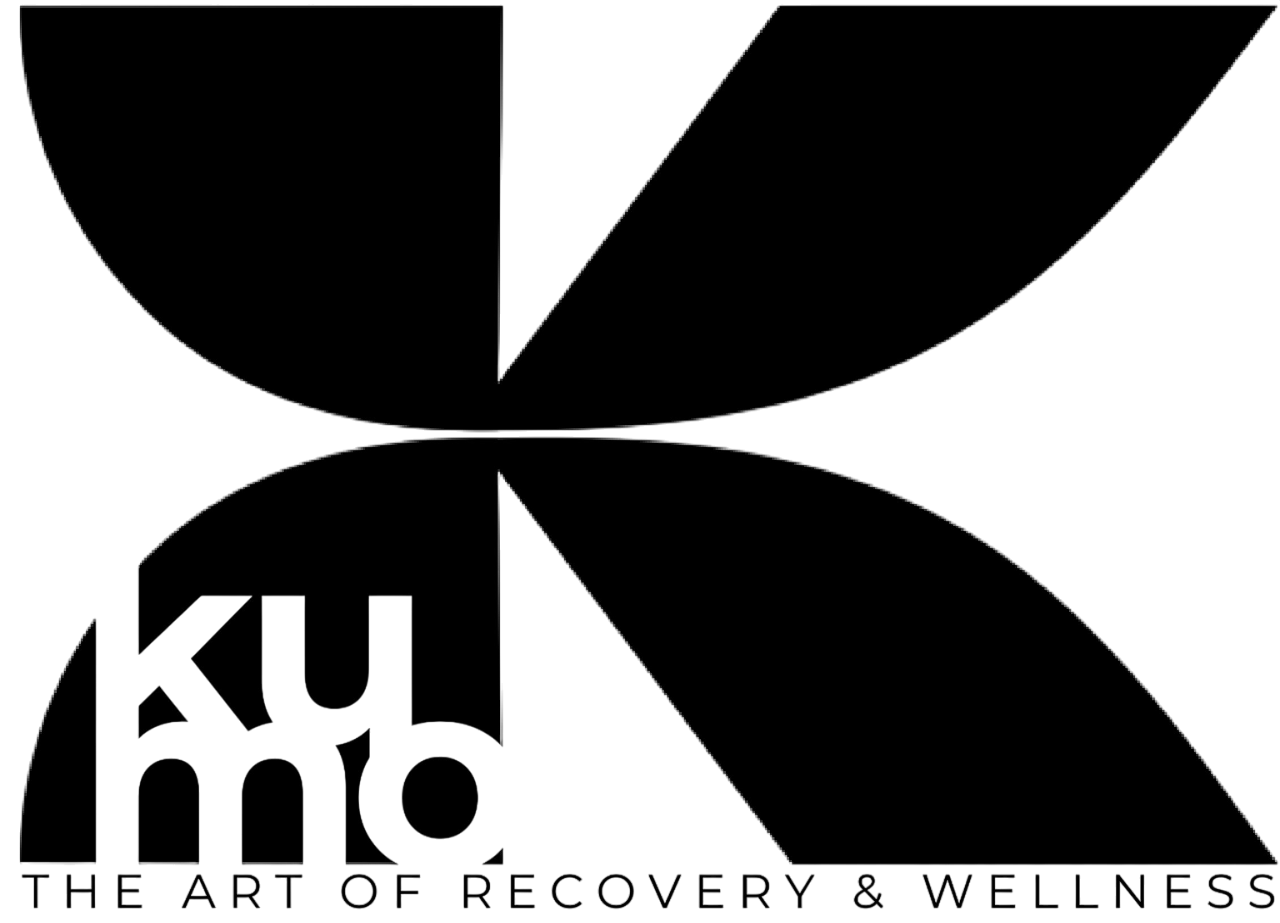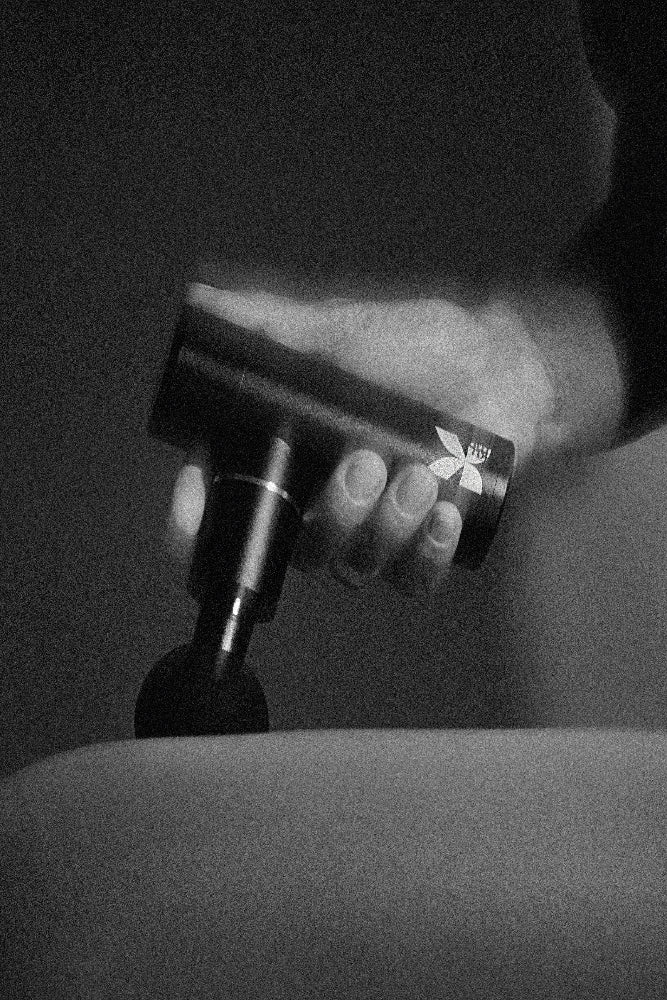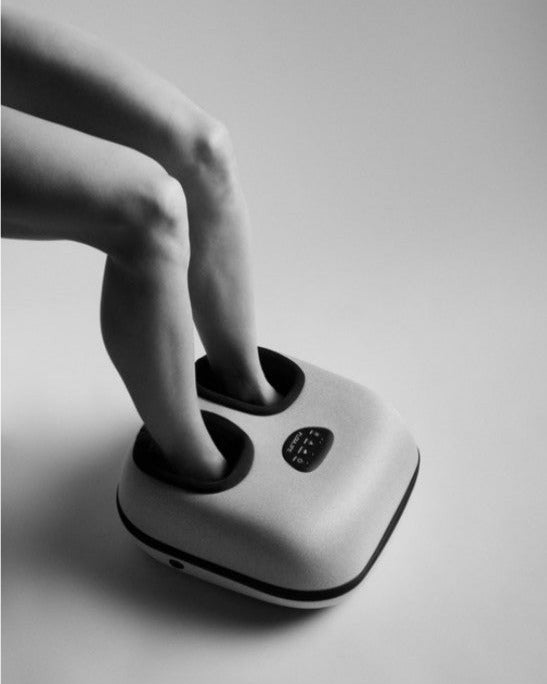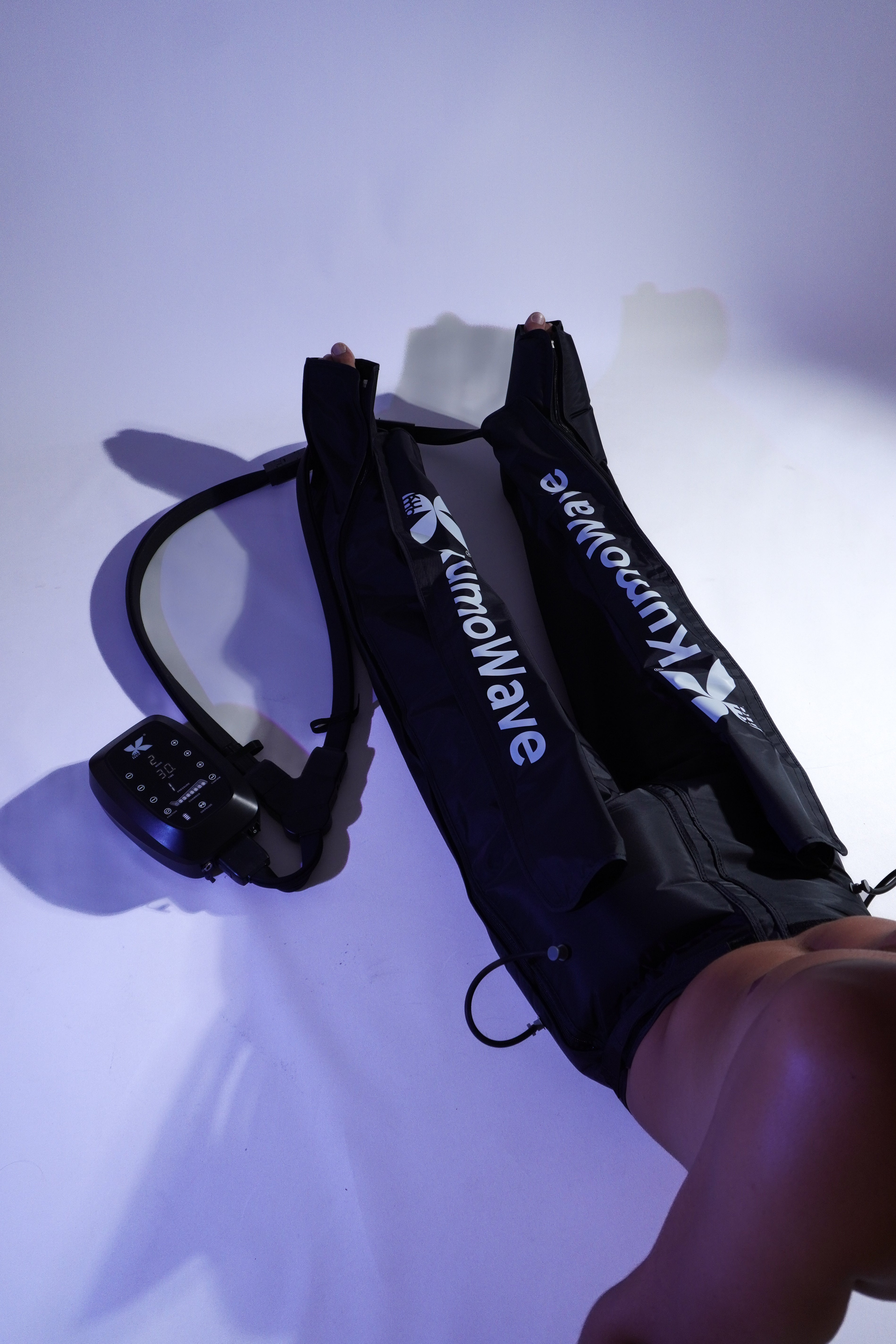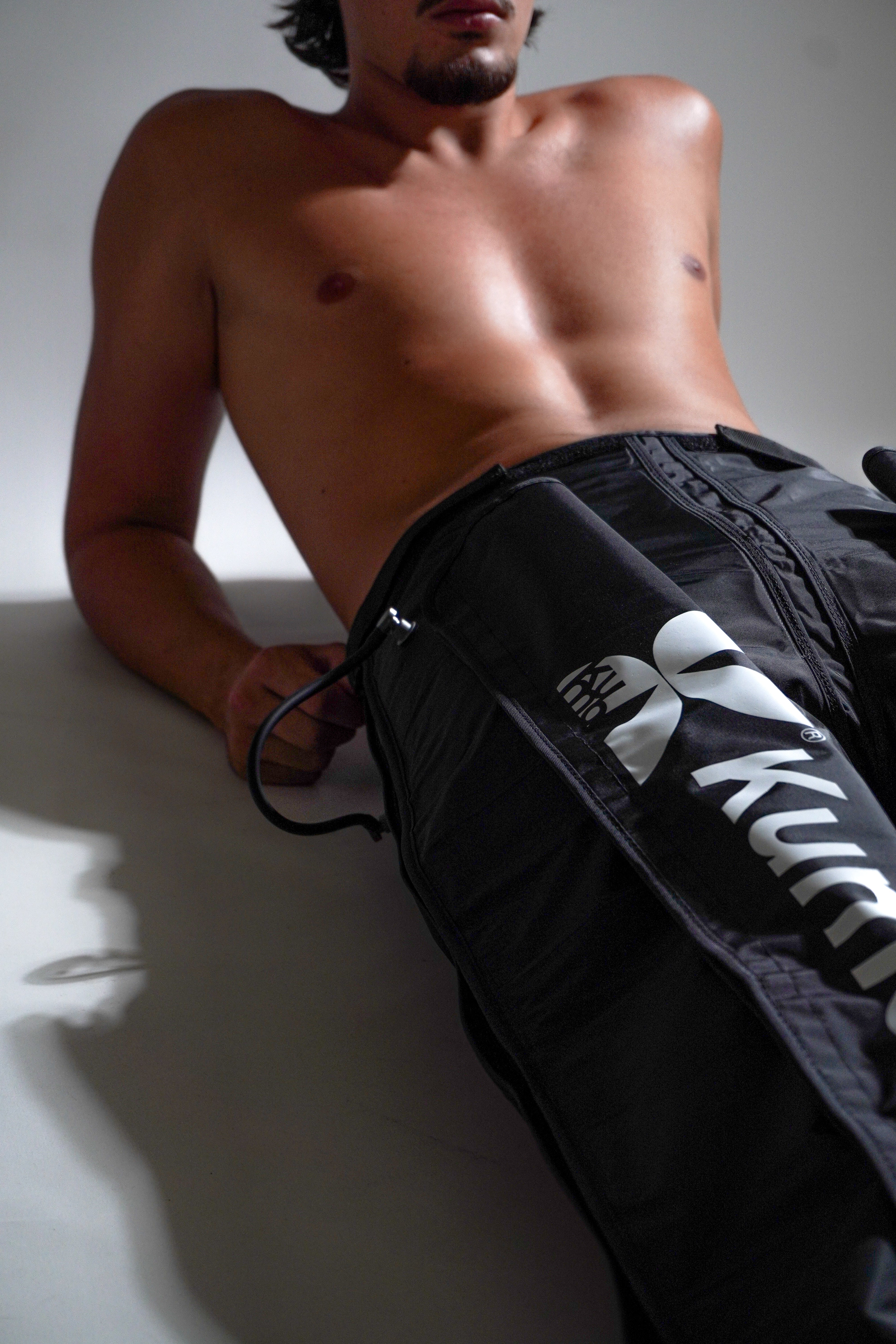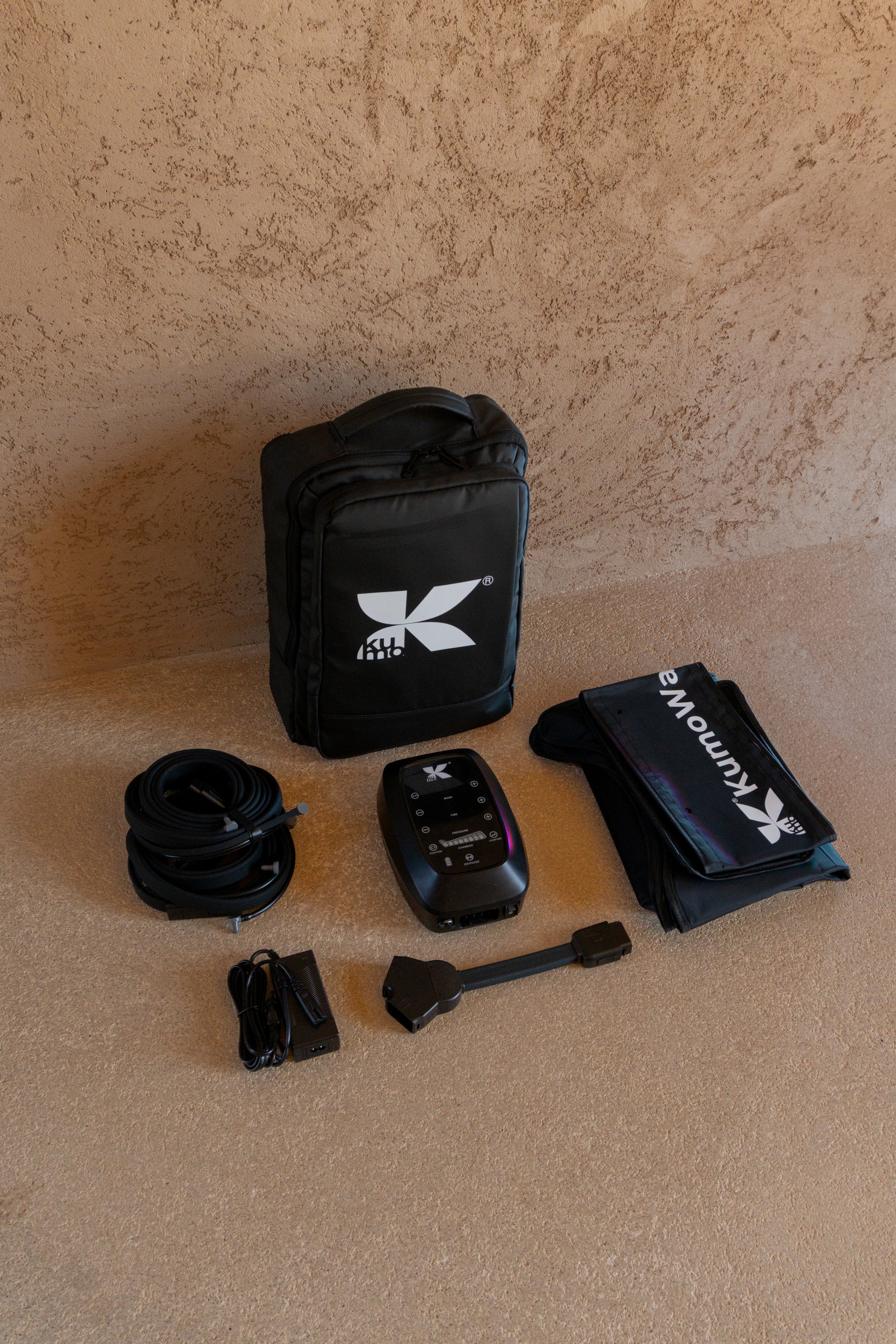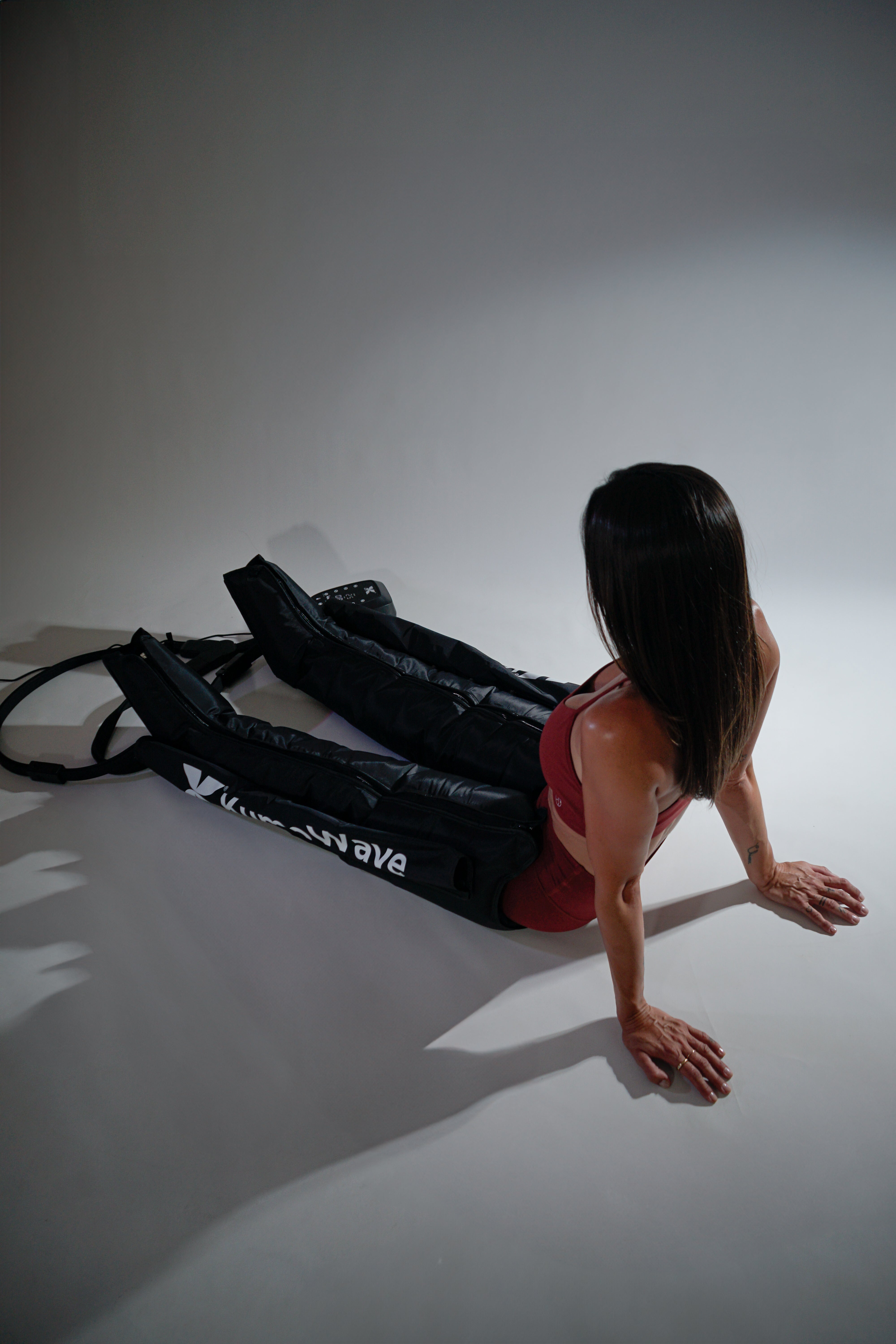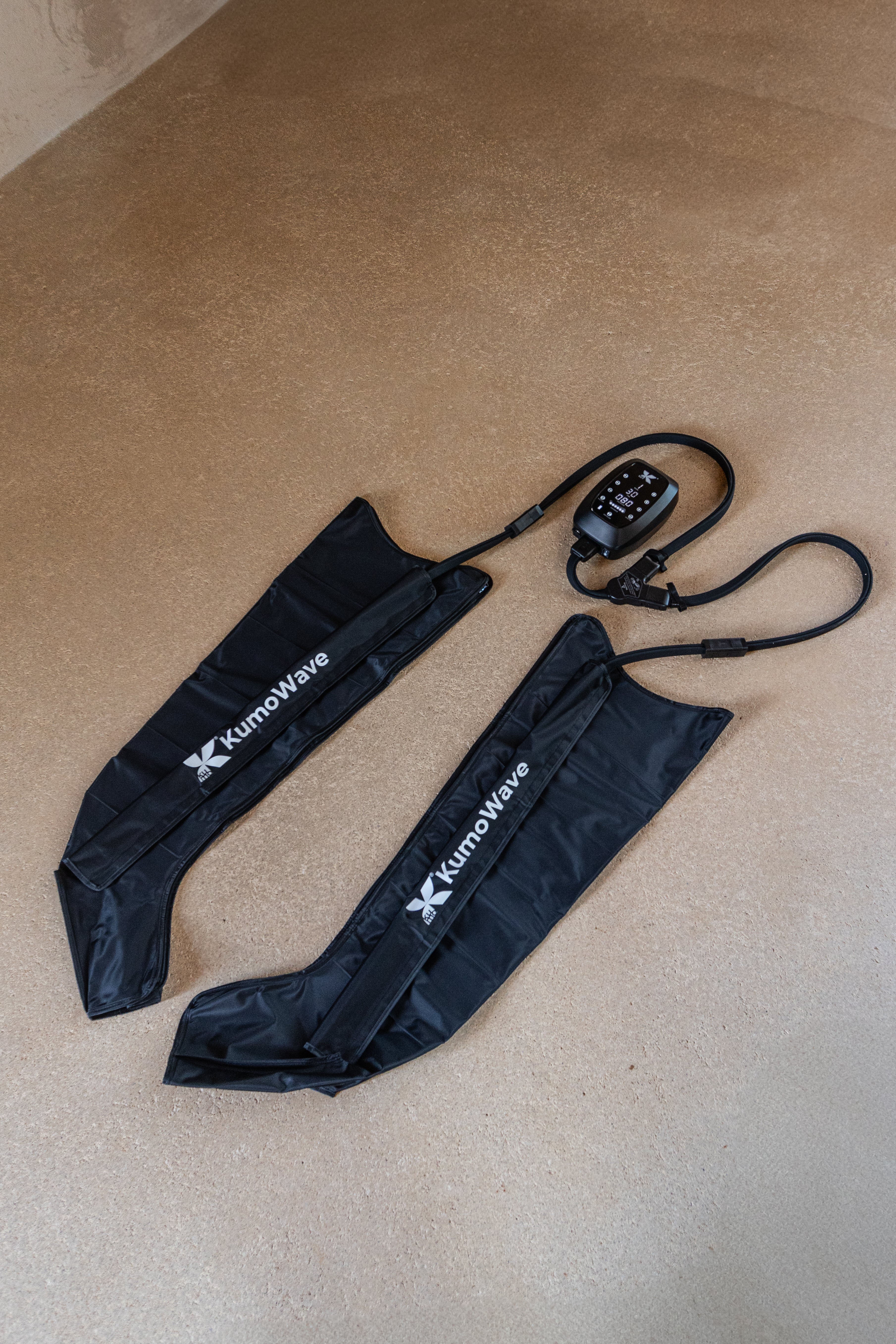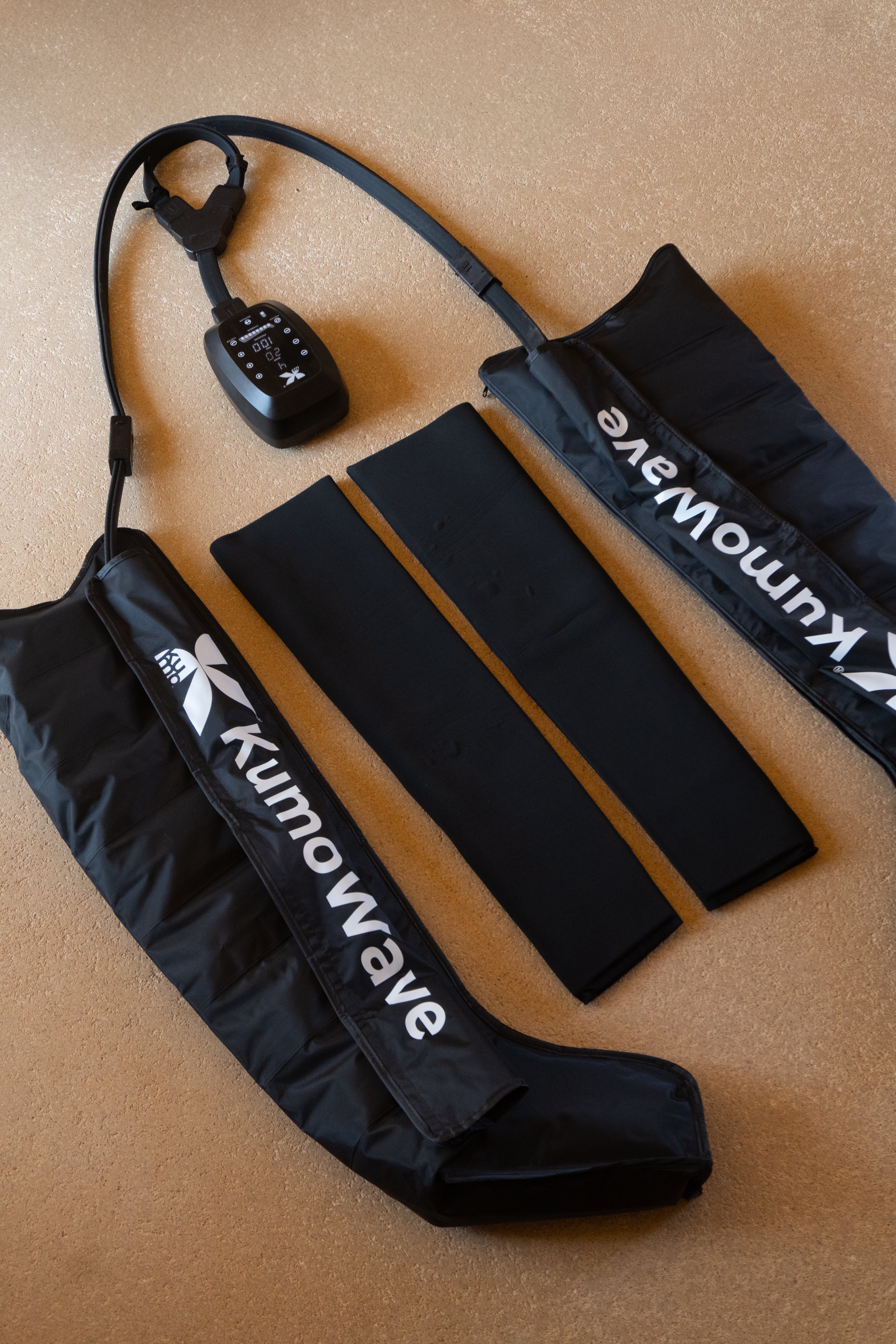Pressotherapy boots to recover and activate circulation faster. If you're wondering what they are and how they work, here's the answer: pressure therapy boots are sequential pneumatic compression devices that massage your legs using air chambers that inflate and deflate in specific areas. This movement stimulates venous and lymphatic return, helps drain fluids, reduces the feeling of heavy legs, and accelerates muscle recovery after exercise.
Coming soon
- Sequential pneumatic compression that promotes venous return and lymphatic drainage.
- Typical sessions last 15–30 minutes with guideline pressures of 30–120 mmHg, depending on goal and tolerance.
- Benefits: less heaviness and edema, faster post-workout recovery, leg well-being.
- Avoid in cases of active venous thrombosis, skin infections, or decompensated heart failure; consult if you have any questions.
- Use them consistently 3–5 days/week and combine them with sleep, hydration, and light mobility.
What exactly are pressotherapy boots?
Pressure therapy boots are inflatable garments that cover the feet, calves, and often the thighs, connected to a compressor. They generate pressure sequentially, from distal (foot) to proximal (thigh), simulating a deep, targeted massage. This pattern guides blood and lymph toward the heart, which can reduce swelling and fatigue in the extremities.
Components and how they connect
- Sleeves with multiple chambers (from 4 to 8+ sectors).
- Control unit/compressor with programs and pressure adjustment.
- Flexible tubes and zipper closure for the boots.
- Optional: hip or arm accessories depending on the system.
Tip: Good ergonomics and correct sizing ensure a consistent seal and precise pressure.
Pressotherapy vs. static compression
Unlike compression stockings, which exert constant pressure, intermittent pneumatic compression works in cycles and segments. This filling/releasing creates a dynamic pressure gradient closer to the action of muscle pumping, useful for venous return and drainage.
How they work: the step-by-step mechanism
The compressor inflates each chamber in sequence, starting at the foot and moving upward. Each inflation pushes venous blood and lymph to the upper segments, reducing fluid stasis. The deflation phase allows for reperfusion and the entry of oxygenated blood. Repeated in cycles, this process:
- Increases venous flow and reduces the accumulation of metabolites.
- Facilitates lymphatic drainage and reduces edema volume.
- It provides a mild relaxing and analgesic effect through mechanotransduction.
Key parameters to adjust
- Pressure: indicatively 30–120 mmHg depending on the objective, sensitivity and professional recommendation.
- Duration: 15–30 min for general recovery; protocol may vary in specific cases.
- Rhythm/cycle: sequential, “peristaltic” or with maintenance pause.
- Frequency: 3–5 times per week for maintenance; daily during peak loads.
What it feels like during a session
You'll notice a firm, progressive pressure moving from your foot to the top of your leg, followed by relief during the release phase. It shouldn't hurt or cause numbness. A slight tingling or warmth is common. If you experience intense tingling, pain, or paleness, stop the session and adjust the parameters.
Benefits and most common uses
- Sports recovery: accelerates the elimination of metabolic waste and reduces muscle soreness after intense workouts.
- Tired and heavy legs: ideal for those who spend many hours standing or sitting.
- Mild functional edema: support fluid drainage in ankles and calves.
- Post-travel well-being: counteracts the prolonged immobility of long flights.
Clinical literature supports pneumatic compression as a tool to improve venous return and, in hospital settings, prevent thrombosis in immobilized patients. For lymphedema and chronic edema, pressure therapy is a common complement to decongestive therapy, always under professional recommendation. You can find the NHS approach to lymphedema management here: Lymphedema Management (NHS) .
What the evidence says
- Intermittent pneumatic compression reduces the risk of venous thrombosis in at-risk patients when used correctly, according to systematic reviews: Cochrane Library: Intermittent pneumatic compression for VTE prophylaxis .
- In sports recovery, trials show subjective improvements in fatigue and swelling markers with consistent protocols; the magnitude of the effect varies by sport, workload, and study design.
- Safety and Home Use: FDA summarizes benefits and considerations of pneumatic compression devices: FDA – Pneumatic Compression Devices.
Safety: Contraindications and Precautions
Avoid using it or consult beforehand if you have:
- Active or recent deep vein thrombosis or pulmonary embolism.
- Decompensated heart failure, severe arterial ischemia.
- Skin infections, cellulitis, uncovered open wounds.
- Severe neuropathies or sensitivity disorders.
- High-risk pregnancy or uncontrolled medical conditions.
If you take blood thinners, have implants, or have recently had surgery, seek medical advice. Adjust the pressure so it's firm but comfortable, and limit the duration if it's your first time.
How to choose the right pressure therapy boots
- Number of chambers: more segments = more progressive and precise massage.
- Programs and control: useful presets (recovery, drainage, relaxation) with manual adjustment.
- Pressure range: wide and stable for customization without spikes.
- Sizing and ergonomics: length and contour tailored to your leg for a consistent seal.
- Noise and portability: low noise level and compact format facilitate consistency.
- Materials and cleaning: easy-to-clean, sweat-resistant interiors.
If you're looking for options focused on performance and daily wellness, explore KUMO's selection of leg compression therapy and learn how to integrate it with other KUMO recovery technologies.
Step-by-step user guide
- Hydrate and empty your bladder; the session will be more comfortable.
- Wear thin clothing (technical socks) to improve hygiene.
- Adjust the boots to your size, without folds or looseness.
- Select a program and moderate pressure to start.
- Lie down, raise your feet slightly, and breathe deeply.
- Evaluate sensations; if there is discomfort, lower the pressure or stop.
- When finished, walk for 2–3 minutes and stretch gently.
Integrate pressotherapy into your recovery routine
Consistency is key. Combine it with:
- Mobility and gentle stretching.
- Restful sleep and protein-rich nutrition.
- Break up sedentary lifestyle with active micro-breaks.
- Complementary modalities such as red light therapy and LED to modulate local inflammation and promote relaxation.
- Myofascial work with a percussion massager such as KUMOPULSE Air for specific tensions.
Routine tip: After demanding workouts, 20–30 min of pressotherapy + 5 min of nasal breathing + 8 h of sleep makes a noticeable difference in the perception of recovery.
Quick use and selection sheet
| Aspect | Key points |
|---|---|
| Aim | Drainage, venous return, muscle recovery |
| Indicative pressure | 30–120 mmHg depending on tolerance and purpose |
| Duration | 15–30 minutes per session |
| Frequency | 3–5 times/week; adjust to training load |
| Adjustment signals | Discomfort, numbness, or paleness = reduce pressure/pause |
| Precautions | Avoid in active DVT, infections, decompensated HF |
FAQ
How many times a week should I use pressure therapy boots to see results?
For most people, 3–5 weekly sessions of 15–30 minutes offer a good time-benefit ratio. During busy weeks, you can use them daily, prioritizing moderate intensity. If your goal is to relieve tired legs from sedentary work, 20 minutes at the end of the day may be sufficient. Observe your response: less heaviness, less swelling, and a better feeling of recovery. If you have a medical condition, confirm the frequency with a healthcare professional.
What is the correct pressure and how do I adjust it safely?
Start with moderate pressure and gradually increase it to a comfortable level of firmness, without pain or numbness. As a practical guideline, many people range between 40–80 mmHg for general recovery, and only adjust higher pressures if tolerated. Avoid exceeding your comfort threshold. The ideal pressure depends on your body type, hydration, and goal. If you experience persistent tingling, decrease the level or stop the session and restart more gently.
Are they good for cellulite or just for muscle recovery?
Sequential compression promotes fluid drainage and microcirculation, which can temporarily improve the appearance of retained skin and orange peel skin. However, it is not a definitive aesthetic treatment. Its primary role is functional: reducing edema, relieving heaviness, and supporting recovery. For more consistent aesthetic results, combine routines (strength training, nutrition, rest) and consider complementary modalities such as LED light therapy .
Can I use them if I'm pregnant?
In uncomplicated pregnancies, some users find relief from swollen legs with gentle compression. Still, it's essential to consult your doctor or midwife first, especially in the third trimester. Avoid them if there's a risk of thrombosis, gestational hypertension, or any other complications. If you get the go-ahead, opt for short sessions, low pressure, and listen to your feelings at all times.
How do they complement other recovery tools?
The boots cover venous drainage and return comprehensively. If you have specific tension points, a percussive massager like the KUMOPULSE Air helps release localized tissue. To modulate superficial inflammation and relax, red light therapy is a good complement. Integrate both into a routine that includes sleep, hydration, and mobility. For personalized advice, contact the KUMO team.
To remember
- Pressotherapy applies sequential compression to promote venous return and lymphatic drainage.
- It benefits post-workout recovery and relieves heaviness and mild edema in the legs.
- Adjust pressure and duration to your tolerance; it should be firm but never painful.
- Avoid use with medical contraindications; when in doubt, consult.
- Consistency and the combination of sleep, mobility, and nutrition enhance results.
- Ready to improve your recovery? Discover KUMO's selection and get started today at kumobalance.com or visit the pressotherapy collection .
